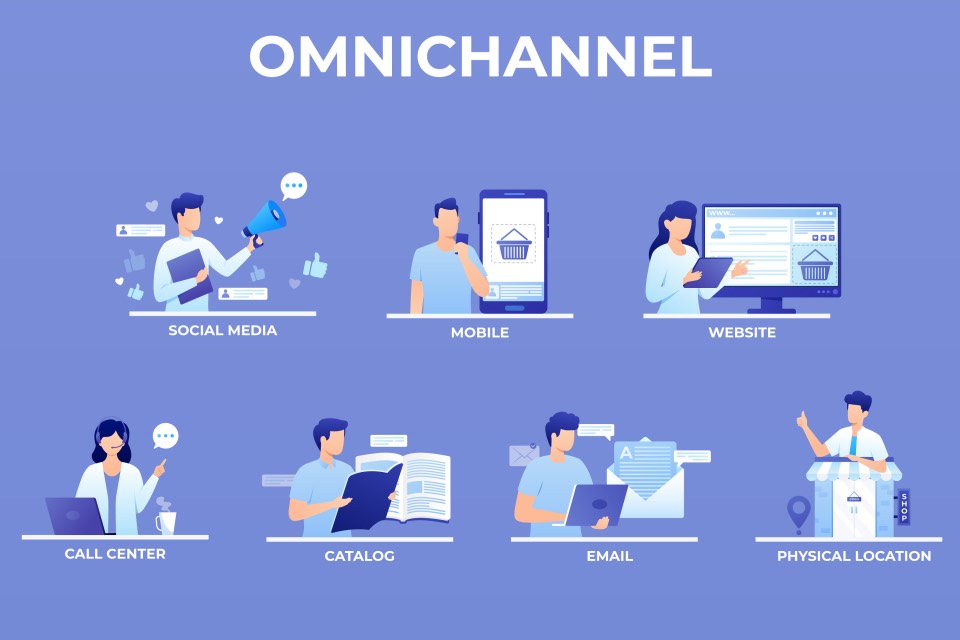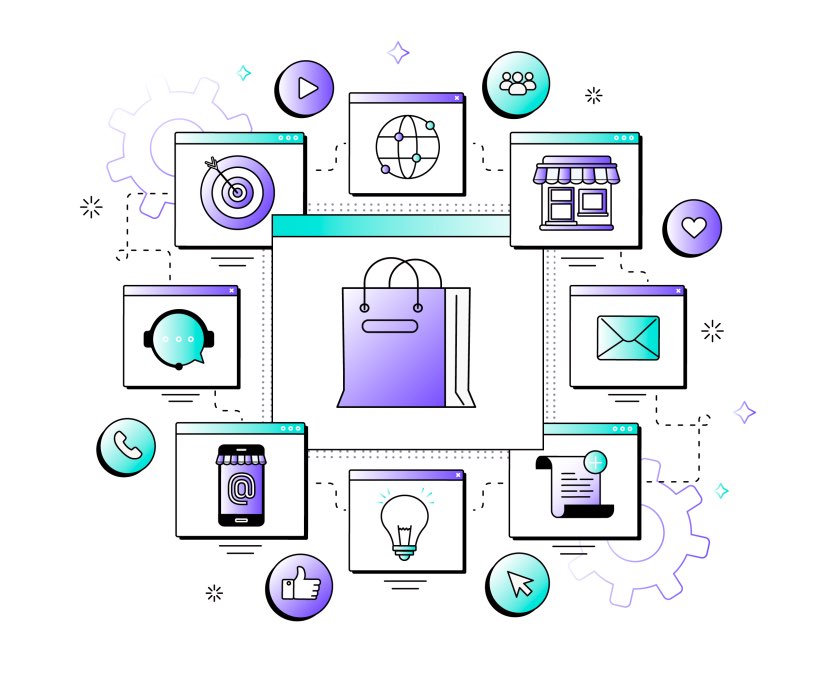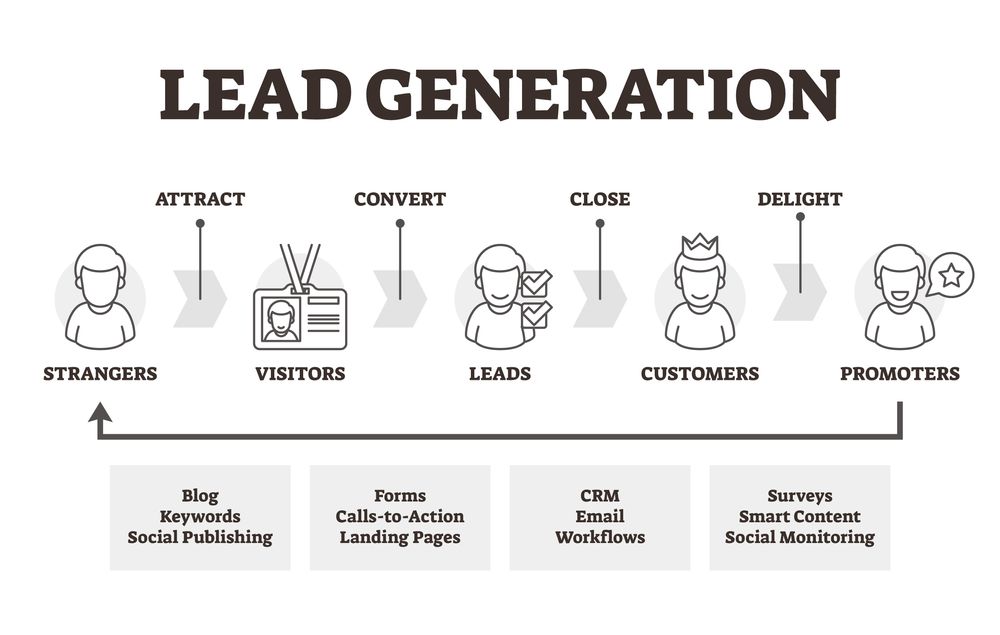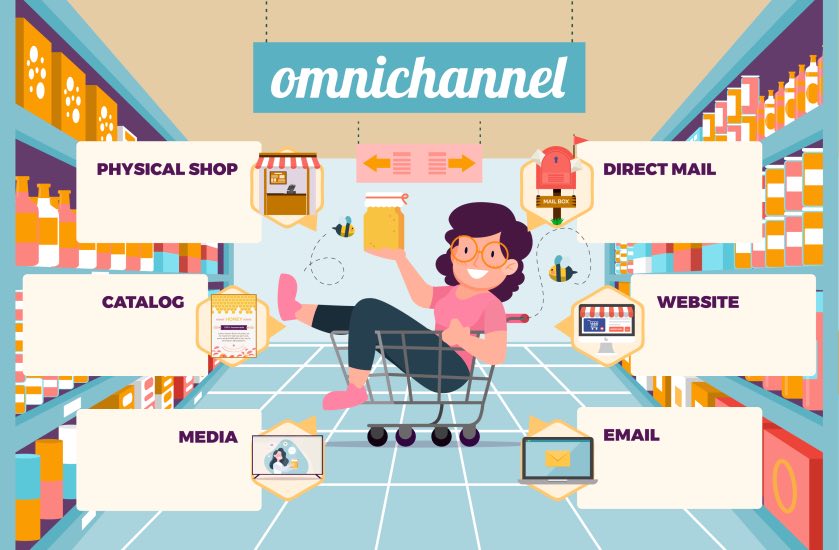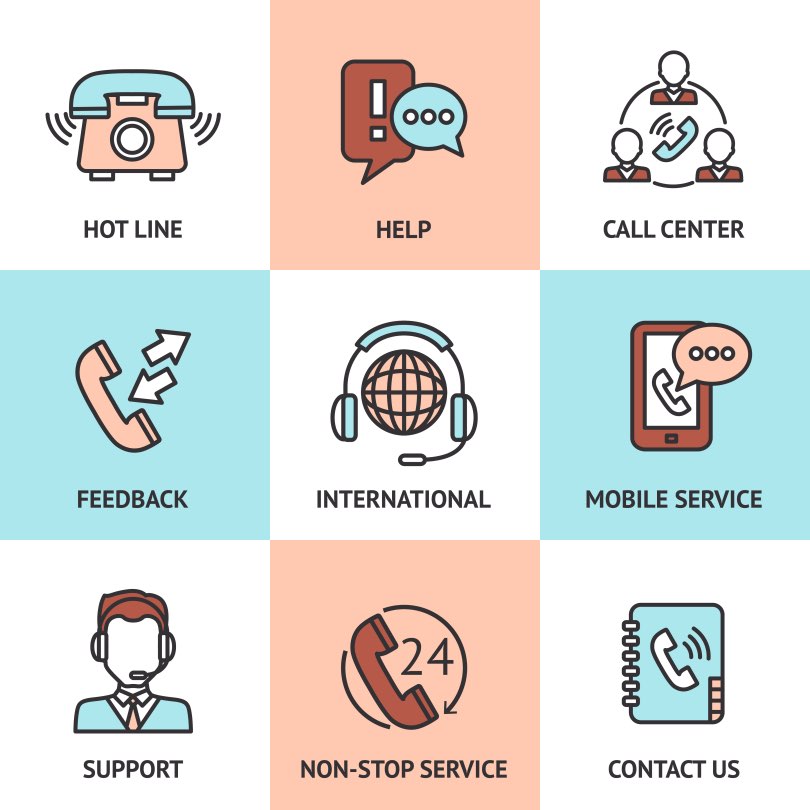The term “omnichannel” may be relatively new, but the concept behind it isn’t. In a nutshell, it’s all about providing customers with a seamless experience, whether they’re shopping in-store, online, via mobile, or even through multiple channels at once!
While the rise of eCommerce has forced many brick-and-mortar retailers to re-evaluate their business models, there’s still a lot to be said for the in-person shopping experience of the retail industry. In fact, studies have shown that nearly 70% of consumers still prefer to shop in physical stores.
But even if they start their journey in a store, there’s a good chance they’ll do at least some research online before making a purchase. In fact, 81% of shoppers conduct online research before buying anything in-store.
The Rise of Omnichannel Marketing
This is where omnichannel comes into play. By providing a consistent experience across multiple channels – online, in-store, and mobile – retailers can provide shoppers with the convenience and flexibility they crave.
And when done right, omni-channel marketing can lead to some impressive results. Studies have shown that omnichannel shoppers are almost 10% more valuable than single-channel shoppers, and they’re also more likely to visit more often and spend more per trip.
What’s more, retailers who implement an omnichannel marketing strategy are also better equipped to compete with Amazon, which has long been considered the leader in omnichannel retailing.
How Does Omnichannel Marketing Connect with Lead Generation?
Omnichannel marketing is the coordination of messaging, branding, and marketing campaigns across multiple channels – think email, social media, your website, in-person interactions, and more. The goal is to create a consistent experience for your potential customers, no matter how they interact with your brand.
Why is this Important for Lead Generation?
Because today’s consumers are savvier than ever before – they expect a seamless, personalized experience, and they are quick to move on if they don’t get it. By creating omnichannel marketing strategies, you can make sure that your brand is delivering the right message, to the right people, at the right time.
And that can make all the difference when it comes to generating leads.
What is Omnichannel Lead Generation?
Omnichannel lead generation is a marketing strategy that uses multiple channels to reach potential customers. The goal of omnichannel lead generation is to create a consistent, cohesive customer experience across all channels, from initial awareness to purchase.
Omnichannel lead generation is often misunderstood in the context of multi-channel marketing and cross-channel marketing. The former deals with using multiple channels to reach and engage with customers, while the latter focuses on using a single channel to reach across multiple touchpoints.
Omnichannel marketing, on the other hand, is a holistic approach that considers the customer’s entire journey, from awareness to purchase. It seeks to meet the customer where they are, with the right message, at the right time.
To do this effectively, it must take into account all of the potential touchpoints – both online and offline – that a customer may have with a brand. Only then can it hope to generate leads that convert into customers.
Do you want to reach more potential customers by implementing an omnichannel lead generation strategy?
Contact Growth Hackers
How Does It Work?
Omnichannel lead generation begins with identifying your target audience and understanding their needs. Once you know who you’re targeting, you can create content and campaigns that appeal to them.
To reach your audience across multiple channels, it’s important to create a consistent brand identity. This means using the same colors, fonts, and style across all of your marketing tools and materials.
It’s also important to have a clear call-to-action (CTA) that directs people to your website or landing page.
Once you’ve created your omnichannel strategy, you need to track your results and adjust your campaigns as needed. The most important metric to track is conversions, which measures how many people take the desired action (such as filling out a form or making a purchase).
You can also track other metrics such as website traffic, engagement rates, and click-through rates of an omni-channel marketing campaign. By tracking these metrics, you can see what’s working and what isn’t, and make changes accordingly.
Omnichannel lead generation is an effective way to reach more potential customers and grow your business. By using multichannel marketing for all available channels and creating a consistent brand identity, you can create a seamless customer experience that leads to more conversions.
Why Should Any Business Invest in Omni-Channel Campaigns?
The goal of an omnichannel campaign is to reach potential customers wherever they are spending their time online. What you want is to turn your website into a lead generation machine.
Benefits of an omnichannel campaign include increased brand awareness, higher conversion rates, and improved customer loyalty. With so many potential customers active on different channels, it is essential to have a presence on as many channels as possible.
- An omnichannel campaign ensures that your brand will be seen by the widest possible audience.
- Omnichannel campaigns and strategies make it easy for customers to find the information they need and make purchases. Customers can easily move from one channel to another without losing any progress.
- Additionally, research has shown that customers who are exposed to a brand on multiple channels are more likely to convert than those who only see the brand on one channel.
- The core of omnichannel marketing lies in its personalization aspect. Businesses that can tailor their message across various channels and yet speak to each customer personally are more likely to be successful in persuading consumers to make a purchase.
- Omnichannel campaigns and strategies allow businesses to track consumer behavior across all channels throughout the buyer’s journey. This helps businesses to identify which channels are most effective in reaching their target audience, and also allows them to make changes to their campaign if necessary.
- Finally, loyal customers are the lifeblood of any business. By engaging customers across multiple channels, businesses can build loyalty and encourage repeat business.
In today’s hyper-competitive marketplace, businesses must employ every tool at their disposal to reach potential customers. An omnichannel approach to marketing is the most effective way to reach the widest possible audience and build lasting customer relationships.
How Can Your Business Make the Most of Omnichannel Lead Generation?
In order to make the most of omnichannel lead generation, you should consider the various touchpoints that your customers use when interacting with your brand.
These touchpoints could include a company website, social media platforms, email marketing campaigns, and even physical locations. By creating a consistent and cohesive message across all of these channels, you can more effectively reach your target audience.
Additionally, you should focus on creating a seamless customer experience that allows customers to move easily between channels without becoming frustrated. By providing a user-friendly omnichannel experience, you can encourage customers to engage with your brand on multiple levels, resulting in more leads and conversions.
Building the Perfect Omnichannel Lead Generation Approach
The core of any omnichannel marketing, multichannel marketing solution or lead generation approach should be going where your customers are at. And so, we begin.
1. Know where your audience exists
Building the perfect omnichannel lead generation approach starts with understanding your audience and where they like to spend their time online.
Do they prefer to hang out on Instagram or Facebook? Are they more likely to sign up for your email list or download a white paper from your website?
Once you have a good understanding of where your audience likes to spend their time, you can start creating content and offers that appeal to them specifically.
It’s also important to analyze your existing customer base when building your omnichannel lead generation approach. Look at how they found you in the first place – were they referred by a friend or did they stumble across your brand on social media? What made them finally decide to buy from you?
By understanding the journey your customers took from being complete strangers to loyal fans, you can create a similar path for new leads to follow.
2. Utilize data to build buyer personas
Your personas are the foundation of your entire inbound strategy, and if they’re not well-researched and developed, your entire approach will suffer.
The key to creating effective buyer personas is to make them as realistic and detailed as possible. Give each persona a name, back story, demographic information, and even a photo. The more lifelike your personas are, the easier it will be for you to keep them in mind when planning your marketing strategy.
Once you have your buyer personas mapped out, you can start thinking about the best ways to reach them.
What channels do they use when researching products or services? What kind of content do they respond to? What are their pain points? Answering these questions will help you develop an omnichannel lead generation approach that’s tailored to your specific target market.
Keep your business on the road to success with omnichannel lead generation!
3. Segment your audience
One of the most important things you can do is to segment your audience. By taking the time to segment your audience into different groups, you can more effectively target your marketing and sales efforts.
Additionally, you’ll be able to better understand the needs of each group and craft more personalized messages that resonated with them. There are a number of different ways to segment your audience, but some common methods include demographics, firmographics, psychographics, and behaviors.
4. Indulge in dedicated lead nurturing
One of the aspects of understanding your customers’ journey involves mapping out the various touchpoints where customers interact with your brand, both online and offline.
The first step is to identify the key stages of the customer journey. This will vary depending on your business but could include awareness, consideration, purchase, and post-purchase.
For each stage, you need to understand what your customers are trying to achieve and what their pain points are. Only then can you start to develop a lead generation strategy that meets their needs.
It’s also important to understand that the customer journey is not linear. Customers will move back and forth between stages as they research and make decisions. As such, your omnichannel lead generation approach needs to be flexible enough to meet all qualified leads where they are at any given moment.
This means having a presence on multiple channels (e.g., website, blog, social media, email) and making it easy for customers to move between them.
5. Identify and prioritize your marketing channels
You’re probably using a mix of digital and traditional marketing channels to generate leads as any other business does. But if you want to create a truly omnichannel lead generation approach, you need to first identify which channels are most effective for your business.
To do this, start by looking at your sales data to see where most of your leads come from. Once you’ve identified your top channels, you can then start to prioritize them in terms of budget and effort.
For example, if email marketing is consistently generating the most leads, you’ll want to invest more time and money into developing targeted email campaigns. On the other hand, if social media is only generating a small handful of leads, you may want to focus your efforts elsewhere.
6. Integrate all your marketing channels
By taking a holistic view of your marketing efforts and building a bridge between your various channels, you can create a more seamless customer experience and generate more high-quality leads. Here’s how:
First, start by identifying your various marketing channels. This could include everything from your website and blog to your social media accounts and email list. Digital lead investing has proven to do wonders where you connect and integrate your strategies together.
Next, take a look at how each of these channels is being used. Are they all working together to support your overall marketing goals? Or are they siloed off from one another, with little or no coordination between them? If it’s the latter, it’s time to start thinking about ways to better integrate your channels.
One way to do this is to create consistent branding across all of your channels. This means using the same logo, color scheme, and tagline on your website, social media accounts, and email newsletter.
It also means creating similar messages and calls to action that are tailored to each channel but still work together to support your overall marketing goals. By doing this, you’ll make it easier for leads to recognize your brand no matter where they encounter it and be more likely to take the desired action.
Another way to integrate your marketing channels is to use data from one channel to inform your activities in another. For example, if you notice that a particular blog post is generating a lot of traffic from social media, you can promote that post more heavily in your email newsletter or on other social media channels.
Or if you see that a certain type of content is getting shared more often than others, you can adjust your content strategy accordingly. By using data to inform your actions in other channels, you can create a more coordinated and effective lead generation approach.
7. Offer robust customer support and measure your growth
Even the most effective marketing campaign will not be successful if customers are not able to get the help they need when they need it. By offering excellent customer support, businesses can ensure that their leads are happy and satisfied, which can lead to repeat business and referrals.
Businesses also need to measure their growth in order to continue improving their lead generation strategy. There are a number of ways to do this, but one of the most important is tracking the number of leads that are generated through each channel.
Businesses should track how many of their leads turn into customers. This data can help them understand what steps they need to take in order to turn more leads into paying customers.
Endnotes – Stay ahead of the race with your personalized omnichannel lead generation strategy
Omnichannel lead generation takes advantage of the fact that today’s consumers are using a variety of channels to research and make purchase decisions. By creating a consistent and cohesive experience across all channels, businesses can more effectively reach and engage potential customers.
Growth Hackers is one of the leading growth agencies that can help you make the most of an omnichannel lead generation strategy by developing targeted content and campaigns that are optimized for each channel. We also have a deep understanding of how the different channels work together, so we can help you create a coordinated plan that maximizes your chances of success.
If you’re interested in learning more about omnichannel marketing and reap the benefits of this opportunity, Contact us today. We’ll be happy to answer your questions and get started on developing a customized lead generation strategy for your business.

